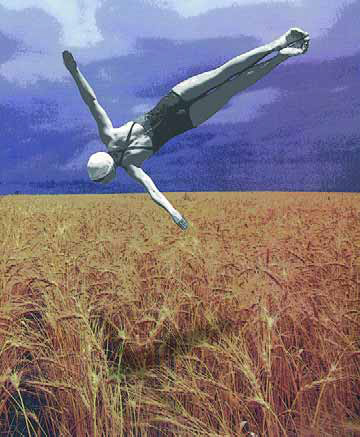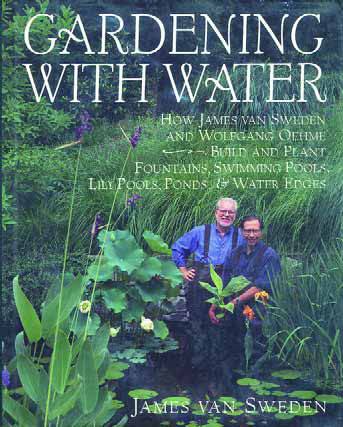installation
Images of waterways almost anywhere in the world are filled with gentle sweeps of free-flowing grasses swaying in the breezes or simply lazing by the water's edge. From a watershaper's perspective, these grasses are arguably the most versatile of all plant materials. In one form or another, they exist and thrive in almost every environment in the world. They can be used by themselves to lend a natural feeling to a stream or pond, next to a contemporary watershape to make a bold statement or nestled among almost any other plants in any landscape style to soften and add texture. One of the best things about grasses (particularly the taller ones) is how gracefully they wave in the wind, adding an element of
When you think of palms, it's easy to conjure visions of Hawaii or some other tropical paradise. These graceful plants evoke a sense of serenity and thoughts of calm tropical breezes - and maybe even memories of a cool mai tai in your hand. Unfortunately for lots of us, palms thrive only in warmer climates. In the United States, for example, they generally do not grow north of the 33rd parallel, which stretches roughly from Northern California on the West Coast to South Carolina on the East Coast. This geographic factor is the main reason I haven't discussed palms before in this column. After three years, however, I figure I'm
Without any hesitation at all, I can say that Gardening with Water by James Van Sweden (Random House, 1995) is one of the most influential books on design that I've ever read. It's currently out of print, but it's certainly worth a hunt and can still be found on the Internet and in many technical bookstores. All through its 206 beautifully illustrated pages, Van Sweden carefully details his approach to designing with water - an element he says should be used in some form in every garden design. Along the way, he covers his firm's use of swimming pools (natural and architectural) as well as birdbaths, fountains, small watergardens and large ponds. It's an important book from a tremendously influential designer. In fact,
I love the versatility of fiberoptic lighting: The technology works equally well in conjunction with landscaping or architectural features, and because there's no electrical current to worry about at the light fixtures themselves, they're a natural around water. Better yet, you can use fiberoptics to create traditional point-light sources, or you can set them up as mellow bands of light over long stretches. I don't use fiberoptics on every job, but when the situation is right and the customer is willing, I'm eager to dig in and design a system that will wow them for years to come. As is true with any lighting system, the main reason to use fiberoptics is
Building a stream that looks as though it was actually completed by Mother Nature is no small challenge. To make the illusion work, the watershaper quite literally "shapes" the basic elements of the stream - its path, width, depth, outcroppings, falls, transitions and plantings - all with an eye toward mimicking natural designs. To a large degree, the process is different from that of designing and building a pond, pool or fountain. In those cases, the watershape generally goes in the ground almost exactly where and how it's been drawn. With streams, however, the differences between
The most important use of faux rock is to make a geological statement - to provide an important accent or focal point in a landscape where none exists. My goal is to create rock formations that complement and enhance the natural setting and fit in harmoniously with their surroundings. That's a point builders who use artificial rock sometimes fail to grasp. They'll execute an ambitious scheme with lots of interesting, well-crafted rockwork, but it ultimately looks unnatural because the rocks they've created have no logical relationship to any indigenous formations or anything else in the surrounding space. I approach things in a different way - one that embraces the site and all of its features. I select, form and install faux rocks that, together, create interesting and beautiful statements in the overall landscape design. As I work, I make my installations to stand up to the question, "Is this rock formation
This waterfall could've been built in either of two ways: A system of internal reservoirs and a long, narrow nozzle could've been formed as part of the structure itself, a task that would've placed huge burdens on the forming crew and the person shooting the gunite; or a manufactured fixture could be used to create the desired effect. Sensibly, the folks at Tango Pools in Las Vegas chose to pursue the latter option, deciding it would be better to





















